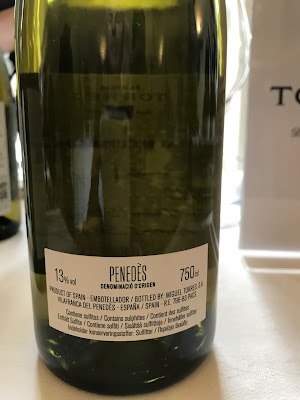 |
Kite
|
2023 was a bumper year. For the first time ever we had fed our vines and they went crazy. Chicken manure was what they got and boy did they appreciate it.
We also managed our bird problem by means of a dummy Kite. That really worked.
As in previous years we bought in Italian grapes as well as picking our own.
 |
| Waiting for the gates at Uva D'Italia to open. Enfield, London. |
 |
| Loading. |
But that resulted in almost more grapes than we could handle. Fun as it is to make wine with Italian grapes, we won't need any next year if the harvest of our own is as big as it was in 2023.
We made:
Grapes from Italy (Puglia)
A 50-50 Montepulciano/Sangiovese co-ferment
Syrah
Trebbiano
Grapes from our experimental vineyard (Thames Valley)
Solaris
Johanniter
Souvignier Gris
Calardis
Fidelio
Rondo
Regent
Cabernet ('Cabaret') Noir
 |
Trebbiano
|
Our Trebbiano has come out a bit on the sweet side. We had trouble with this grape last time we tried to make it. White wines can be trickier than red. Vediamo.
Syrah didn't taste as good as last time but shows signs of improvement in bottle.
We co-fermented the Montepulciano with Sangiovese because previously our Montepulciano in purezza was surprisingly acidic whereas Sangiovese had been more accommodating.
 |
| Solaris |
Solaris was the first white to ripen. The quantity was incredible. What usually took us an hour to pick took all day.
We have to own up to a disaster in the course of making our Solaris. A 34 litre demijohn slipped and shattered during racking and what was left of the wine was probably oxygenated. We don't have much hope but as they say in Bordeaux, 'on ne sait jamais avec ces choses.'
 |
| Rondo bottles |
Next came Rondo. We have only about 20 vines of this but there was enough to vinify it separately. Normally we would have thrown whatever we had in with our Regent which makes up the bulk of the red grapes in our right block. This Rondo is tasting rather promising. (Surprise!).
 |
| Johanniter |
As with Rondo, we had never had enough Johanniter to vinify separately and Johanniter is not quite as resistant as say Solaris so it was a pleasant surprise again, thanks to the chicken manure to find quantity enough to make for the first time a separate vinification.
We're not sure where this Johanniter is going. On bottling it tasted rather like a grassy old-fashioned English wine. Drinkable but not very exciting. Elevage could help as we have seen in the past with Solaris.
 |
Souvignier Gris bunch
|
Souvignier Gris grapes have a lovely pink tinge to them and the variety is aromatic so we decided to make an experimental Orange Wine, again with our first ever separate vinification of this variety.
As you can see, a week's maceration produced a gorgeous golden wine. What little we tasted on bottling was rather awful though. Again. in Elevage we trust to bring this round to something drinkable one day. Stranger things have happened in this business.
Next came our main red variety, Regent. As you see, this was abundant and we made 60 litres in one of our Speidel fermenters. We are already quite happy with the results.
 |
| Fidelio |
Another great excitement in 2023 was the discovery (posted in these pages) that our Geisenheim GM8107-3 and our Geilweilerhof GF93-22-6 have recently been dignified with their own names, Fidelio and Calardis Blanc respectively. Fidelio we love but Calardis (the Roman name for Geilweilerhof) doesn't trip off the tongue so well.
Nevertheless, once more there were quantities sufficient to make separate wines with these plantings although we threw in some other grapes to make up the Calardis - about 25% consisting of Phoenix. Helios and Orion. We call this 'Calardis and Friends.'
To start with, the Fidelio appeared to be the better of these two but now maybe the Calardis and friends is the one.
 |
| Cab Noir |
Our left block is planted mainly with the Blattner variety originally called Cabernet Noir but now obliged to be known as Cabaret Noir no doubt due to objections by the Cabernet lobby (who knew of such a thing?). Our planting there covers more than one year so the vines are of varying maturity. Another UK grower of Cabaret Noir said they only pick in October. We found this strange because when we bough this variety we understood it ripened at the same time as Rondo if not before.
By the time we picked on October 1st, the wasps had eaten their fill so there was not much in the way of quantity.
The grapes from the youngest vines were hard, tiny and not plentiful to say the least.
 |
| That's all, folks! |
A cursory taste of the combined older and newer Cab Noir juice was not promising.
This variety has replaced our Triomphe D'Alsace (vielles vignes) which was hopeless for wine (but made not bad grape juice). We replaces our vieilles vignes Bacchus with Soreli, deriving from (Tocai) Friulano and obtained by the Vivai Cooperativo Rauscedo. So far this Soreli has hardly produced a single grape but we live in hope.






















































